Published 15 September 2019 ● Last Updated on 16 July 2020
“We all breathe this one air, we all drink the same water. We live on this one planet. We need to protect the Earth. If we don’t, the big winds will come and destroy the forest. Then you will feel the fear that we feel,” writes Raoni Metuktire, an environmentalist and chief of indigenous Brazilian Kayapó people in the Guardian, his article title ‘We, the peoples of the Amazon, are full of fear. Soon you will be too’.
We, the so called civilized people, living in our big cities are so disconnected from the land beneath our feet that it is worrisome. The Amazon Rainforest has been burning brightly and fiercely for over a month now; and we have arrived at a stage where no matter how much we would like to help better the situation, it will still be ‘too little, too late’ because the damage done is irreplaceable. If we are not fearful now, are we waiting for the apocalypse to come?
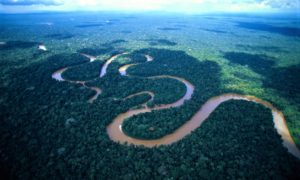
Why is the Amazon Rainforest so important?
Spread over 2.1 million square miles, this lush green and dense tropical rainforest is often referred to as the ‘lungs of the world’. As environmental scientist Carlos Nobre points out – it would be more appropriate to call the Amazon Rainforest a ‘sink’, one that absorbs carbon dioxide (CO2) from the atmosphere and stores it. According to him, the Amazon rainforest absorbs about 1 to 2 billion tons of CO2 in a year. With the fires and deforestation, now it is releasing about 500 to 700 million tons of CO2 back into the atmosphere and if deforestation is to continue the Amazon will no longer be a sink but only another source of CO2. You don’t need to be an expert to realise that most certainly this vast devastation is going to have a severe impact on climate change.
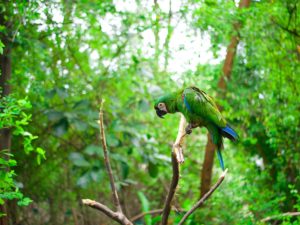
The Amazon Rainforest is also home to a variety of flora and fauna – at least 40,000 plant species, 427 mammals, 1300 birds, 378 reptiles, 400 amphibians and 3,000 freshwater fish as well as about 400 indigenous tribes – a rich and thriving ecosystem that has fallen prey to mankind’s greed. Now, we stand to impact nearly 10% of the world’s known biodiversity with the destruction of these forests.
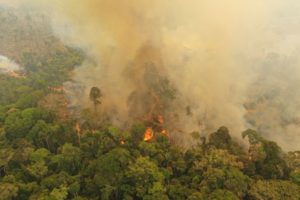
Why should we be worried about wildfires as they are a natural occurrence?
Wildfires are a natural phenomenon in the Amazon during the dry season from July to October, but in its guise farmers and loggers start their own fires to clear forest areas for more lucrative businesses like ranching – to meet the ever growing demand for edible meat and leather for the fashion industry, mining and agriculture. The one thing that time and again we seem to forget is that Nature has its own way of dealing with its natural occurring disasters; when we lend a helping hand it clearly goes out of hand!
Yes, one of the major reasons for this uncontrollable spread of fires across the Amazon is deforestation. In the last 50 years, we have lost 17% of the Amazon rainforest and the current situation threatens to take that percentage up to 20 to 25% leaving us with a forest dieback situation.
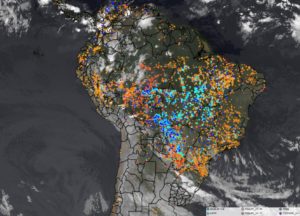
As I write this, there have been over 100,000 fires in Brazil reported by the Brazilian National Institute for Space Research (INPE) this year (a number that’s double 2013 levels). In addition, there are many more fires spread across other South American countries. The world’s binoculars are focussed on Brazil because 60% of the Amazon forest area falls under it; plus their current President Jair Bolsonaro made it clear that development was more important than the environment- it is estimated that this year an area of the Amazon rainforest, roughly the size of a football pitch is cleared every minute.
Why are the other forest fires around the world not being covered as much?
Yes, there are other forests on fire around the world – from Siberia to Indonesia.
In August 2019 alone in Africa, NASA reports that there were 6000 fires in Angola and 3000 in the Democratic Republic of Congo. But in the savannas, the fires are in areas that are open grass fields or small cultivated lands; they do not result in any major deforestation. Plus they are a part of the natural ecosystem and allow new vegetation to grow in the area. However, the threat of major deforestation due to development is looming nearby.
Meanwhile, in Siberia the smoke cloud caused from forest fires was larger in area than the entire European Union. These forests have been ablaze due to the unusually high temperatures in the region and more than 13 million hectares of forest have been destroyed, an area larger than Greece. In the Arctic region apart from Siberia, Canada and Alaska are also dealing with forest fires and most certainly, these fires will also have a serious effect due to their proximity to the Arctic Circle.
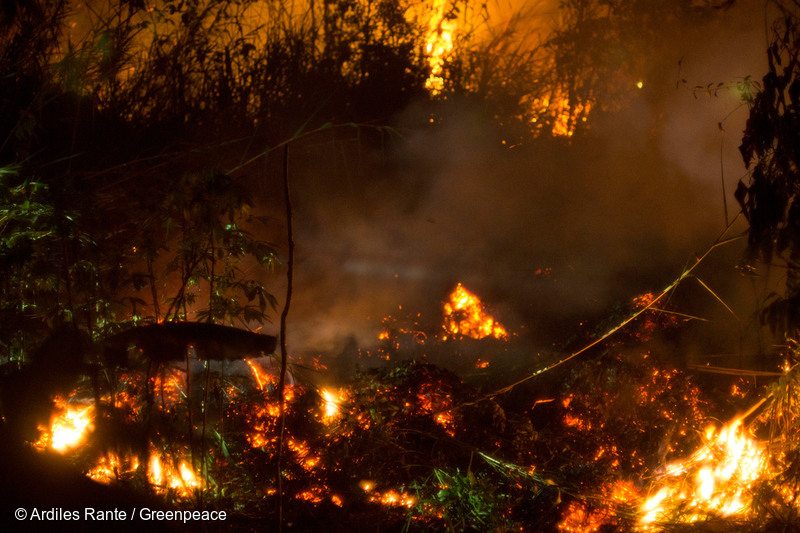
Closer home, Indonesia is battling the spread of forest fires many of which were started by farmers practising ‘slash and burn’ for clearing land and the hot weather temperature is conducive for it to spread. The smoke cover has spread to neighbouring countries like Singapore and Malaysia affecting the air quality; Malaysia has sent in an official note requesting that the situation be tackled immediately. Around 6312 hot spots have been detected by officials signifying that there are fires on across the archipelago.
There are fires in other parts of the world too – Europe, United States and Australia and while the reasons for their spread may be the same, one cannot compare them as the eco systems in each area are different. However, overall the loss of forests will impact our climate.
Why is deforestation being allowed to happen at such a high rate?
As mentioned earlier, one of the main causes for these forest fires is deforestation – slowly but surely we are choosing to give up our forests for development.
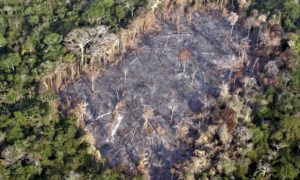
In the Amazon, the main reasons for this deforestation have been cattle grazing, agriculture and mining; and these hold true for other regions as well. Brazilian President Bolsonaro’s political agenda of ‘economic development at the cost of environment conservation’ has aggravated the situation much more – deforestation rates in Brazil are at a high.
Ever since the US-China trade wars, Brazil has emerged as the main soya exporter to China. To meet the increased demand, forest areas are being cleared to make them into soya plantations. The beef industry has also increased its exports and therefore more area is needed for the animals for grazing and rearing. While all this is beneficial for Brazil’s economy, in the long term development at the cost of the environment ends badly. Are we not seeing the bigger picture here?
Indonesia is the world’s top producer of palm oil. Farmers use fires to clear areas for palm oil cultivation. But unlike Brazil, the Indonesian Government has sealed parts of palm oil and timber concessions owned by 10 companies on Borneo Island and are already investigating the companies that may have started these fires. Further, the military and other agencies have been deployed to tackle the fire situation and bring it under control immediately.
Why is the world not helping Brazil?
First, the world woke up to the extent of Amazon Rainforest fires a tad bit late, roughly a month back or so and ever since there has been a flurry of events worldwide and within Brazil. Here are some of the highlights –
– At the G7 Summit in France, 7 nations agreed upon a $22 million aid to help fight the Amazon Rainforest fires. President Bolsonaro rejected the offer due to his personal disagreements with French President Emmanuel Macron and said that he would accept only if Macron apologised.
– After refusing the G7 help, Brazil accepted $12 million in aid from the United Kingdom.
– After immense world pressure – protestors protesting, European leaders threatening to cancel trade deals and a call to boycott Brazilian products, President Bolsonaro finally mobilised the military in large numbers to help put out the fires.
– On 6th September, seven South American countries – Bolivia, Brazil, Colombia, Ecuador, Guyana, Peru and Suriname signed a pact to protect the Amazon Forest and work together on reforestation.
– Major companies such as H&M and VF Corporation – owner of popular brands such as Timberland and North Face- have boycotted Brazilian leather until they are sure that their suppliers are not a cause to the spread of these forest fires.
Why should I care about rainforest fires?
The answer is simple – this large scale devastation is going to impact you in the near future as long as you live on planet Earth. It doesn’t matter how far away we are from the Amazon or how close we are to Indonesia or any of the other hotspots, each one of us are going to pay a price for it!
Now that all the ‘why’ questions have been taken care of, it’s time to get into action mode.
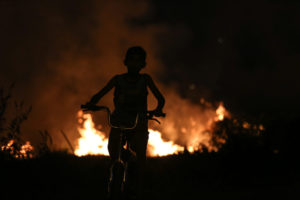
What can we do to help?
Without complicating it any further, here are two ways in which you can help – by spending money or by spending time.
Money│If you’d like to help but don’t have the time; make a donation to help the cause.
– Donate to verified organisations like Rainforest Action Network, Amazon Watch, WWF and Rain Forest Concern to name a few.
– When buying products that contain palm oil, ensure that they are sustainably produced or RSPO certified palm oil.
– Look for the Forest Stewardship Council (FSC) label when buying products that come from forests. The label ensures that these products come from sustainably managed forests.
Time│If you don’t want to spend money but get involved in the process, time is of the essence.
– Reduce your intake of beef and purchase of non-essential leather items. Brazil is one of the world’s largest exporters of beef; ranchers clear forested land for the cattle to graze and set up farms.
– Join local protests against the forest fires. The greater the number of supporters, the more pressure one can put on governments to make changes that are pro-environment.
– Sign online petitions to show your support. Start with these three – WWF, Greenpeace and this one by Gabriel Santos, a lawyer in Brazil.
We know what needs to be done, the question is how soon are you going to start doing it to save your planet Earth?
Related Stories:
A Sustainable Lifestyle | Higher Expenditure or More Savings?
Earth Day 2019 | 5 TED Talks on the theme ‘Protect Our Species’



0 Comments